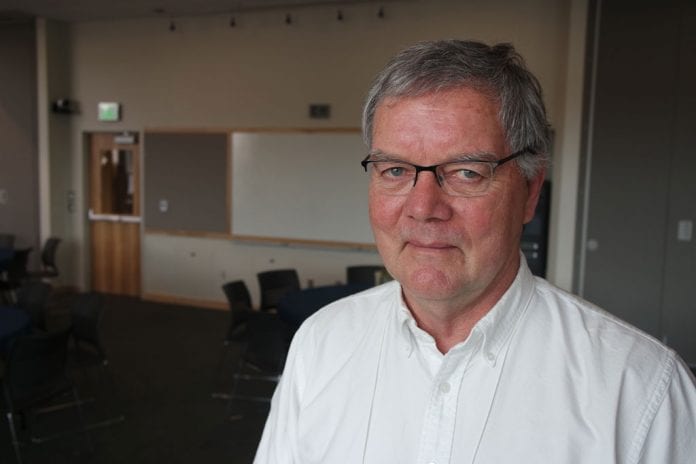Driving east from Cordova on the Copper River Highway across the Copper River Delta, says fish ecologist Gordie Reeves, you’re straddling a line between two remarkably unique halves of the largest wetlands on the Pacific coast of North America.
On your right, toward the Gulf of Alaska, is a vast marsh uplifted by the 1964 earthquake. In these ponds, you could expect to find a healthy array of freshwater insects – caddis flies, dragonflies and midges are among them – food for salmon before they swim to the sea. In this way, the uplifted marsh has a vital role in the life of the region’s salmon. Then look to your left, in the direction of the Chugach Mountains, and you’re looking at the outwash plain. This is where stream bottoms are cobbled in the gravels where salmon spawn.
“It always just blows me away to drive down the road and know on one side of the road the system operates this way and on the other side of the road it operates that way,” says Reeves, who discussed his decades-long science career, climate change and the future of research in his keynote address at Cordova’s Copper River Delta Science Symposium on March 27, the 54th anniversary of the Great Alaskan earthquake.
“This is the beauty of this place, the beauty and variability that we have in a relatively small area,” Reeves says.
Salmon in different streams spawn at different times, sometimes separated by many weeks. Insects such as dragonflies hatch as many as eight weeks later on the east side of the Delta than on the west side.
“We may not have many species but what we have here is incredible life history diversity,” he said.
“This variability that we have here, and we’re just sort of now uncovering the extent of it, is going to be really crucial in terms of the response of this area …to climate change,” Reeves said. “I would say that this is going to be a real buffer to climate change.”
A changing climate affects the Earth in different ways, but locally, the most significant effects will be in winter. The region is especially sensitive to winter warming because average winter temperatures are near 32 degrees.
“Because we’re dealing with cold-blooded organisms, changes in winter temperatures are going to be really significant here,” he said. “This means a small shift in temperatures can be quite significant in terms of the forms of precipitation that we get – snow versus rain, but also from an ecological perspective in terms of what’s going on.”
A long history of research on the Copper River Delta has uncovered multiple examples of how different species such as salmon, insects and birds share similar timing, but scientists expect that perfect synchronization to change as animals respond to warmer conditions.
Warming temperatures are already documented on the delta. A one degree increase on the delta would mean that insects – a vital food source for salmon fry – would emerge six to eight weeks earlier. Fish could be expected to do the same.
“There could be changes to spawning dates and the time of return. Think about what the consequences of that could be to the fishery, to subsistence,” Reeves says. “When we think about climate change we have to think of these cascading types of effects.”
Ocean acidification and glacial melting are compounding effects that also need to be understood, he said. Returning fish are expected to be smaller, as some data already suggest, and in some instances, climate change may bring short-lived benefits for certain species, he said.
The 2018 Copper River Delta Science Symposium in Cordova was sponsored by Alaska Sea Grant College Program; Cordova District, U.S. Forest Service; Pacific Northwest Research Station, U.S. Forest Service; Prince William Sound Science Center; Copper River Watershed Project; and the Oil Spill Recovery Institute.















